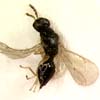 |
|||||||||||||||||||||||||||||||||||||||||||||||||||||||||||||||||||||||||||||||||||||||||||||||
|
|
Home | Open the Key | References | ||||||||||||||||||||||||||||||||||||||||||||||||||||||||||||||||||||||||||||||||||||||||||||
|
|||||||||||||||||||||||||||||||||||||||||||||||||||||||||||||||||||||||||||||||||||||||||||||||
Classification
|
|||||||||||||||||||||||||||||||||||||||||||||||||||||||||||||||||||||||||||||||||||||||||||||||
Subfamily Tribe |
|||||||||||||||||||||||||||||||||||||||||||||||||||||||||||||||||||||||||||||||||||||||||||||||
Diagnosis
|
|||||||||||||||||||||||||||||||||||||||||||||||||||||||||||||||||||||||||||||||||||||||||||||||
|

|
||||||||||||||||||||||||||||||||||||||||||||||||||||||||||||||||||||||||||||||||||||||||||||||
| |
|||||||||||||||||||||||||||||||||||||||||||||||||||||||||||||||||||||||||||||||||||||||||||||||
Distribution |
|||||||||||||||||||||||||||||||||||||||||||||||||||||||||||||||||||||||||||||||||||||||||||||||
|
Semielacher is a small genus native to Australasia and recently recorded in the Mediterranean countries (Siscaro et al., in press). |
|||||||||||||||||||||||||||||||||||||||||||||||||||||||||||||||||||||||||||||||||||||||||||||||
| |
|||||||||||||||||||||||||||||||||||||||||||||||||||||||||||||||||||||||||||||||||||||||||||||||
Biology |
|||||||||||||||||||||||||||||||||||||||||||||||||||||||||||||||||||||||||||||||||||||||||||||||
|
The biology of S. silvicola Boucek is unknown, while S. petiolatus (Girault), described as a parasitoid of the citrus leafminer Phyllocnistis citrella Stainton (Lepidoptera), has been furthermore recorded on several Diptera and Lepidoptera leafminers (Massa et al., 2001). |
|||||||||||||||||||||||||||||||||||||||||||||||||||||||||||||||||||||||||||||||||||||||||||||||
| |
|||||||||||||||||||||||||||||||||||||||||||||||||||||||||||||||||||||||||||||||||||||||||||||||
| |
|||||||||||||||||||||||||||||||||||||||||||||||||||||||||||||||||||||||||||||||||||||||||||||||
Comments |
|||||||||||||||||||||||||||||||||||||||||||||||||||||||||||||||||||||||||||||||||||||||||||||||
|
Semielacher may be distinguished from
all the Cirrospilini included
in the key, with which it shares funicle 2-segmented in both sexes,
propleura separated posteriorly, submarginal vein with 3 or more
setae dorsally and 2 or more pairs of scutellar setae, by having
mesoscutum much shorter than pronotum medially, distinct petiole
and distinct tentorial pits on lower face. It also can be distinguished
from C. ambiguus, Danuviella,
Diglyphus, Meruana
and Zagrammosoma by having
notauli complete and reaching posterior margin of mesoscutum,
while from Diaulinopsis
by having postmarginal vein not longer than 1.25 times the length
of the stigmal vein and by not having male scape swollen.
According to Boucek (1988), S. petiolatus can be distinguished from S. silvicola by having much shorter petiole, shorter scutellum and yellow gaster. He also revealed that there are at least other 3 Australasian species not yet described. S. petiolatus, introduced in several Mediterranean countries in relation with the Phyllocnistis citrella biological control, has spontaneously spread out in all this area, revealing a high dispersal capability. In Italy and Jordan the species has been also recovered from other Lepidoptera and Diptera leafminers (Massa et al., 2001). |
|||||||||||||||||||||||||||||||||||||||||||||||||||||||||||||||||||||||||||||||||||||||||||||||

